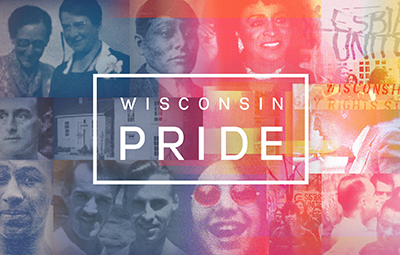Frederica Freyberg:
Starting in October, 265 emergency pantries in Wisconsin that accept donations from the Federal Emergency Food Assistance Program can no longer ask visitors to verify their address in order to access free food. This new state rule comes as food pantries are seeing an explosion in need, and such verification can be a barrier to access. But could it also result in shortages at popular locations like the Oshkosh Area Community Pantry that saw a 70% increase in usage last year? We ask its executive director, Ryan Rasmussen, and thanks very much for being here.
Ryan Rasmussen:
Thanks for having me. Pleasure to be here.
Frederica Freyberg:
So as we’ve said, your pantry has seen a major surge in demand in the last few years. How related is that surge to the end of extra food share benefits available during the COVID pandemic?
Ryan Rasmussen:
Absolutely extremely relevant. We saw a massive spike last year around the March time frame, right when food share benefits were starting to go back to pre-pandemic levels and at the exact same time that that was happening, we were also seeing inflation at the highest we’ve seen in a long time. Food prices were skyrocketing. Groceries and gas, everything was just through the roof. So all of it culminated in a really perfect storm of a lot of expensive things and folks needing some additional help.
Frederica Freyberg:
So your location also operates more like a regular grocery store where people can choose the food they need or want. How much does that influence its popularity do you think?
Ryan Rasmussen:
I think we’re extremely popular because of that. We are firm believers in the dignity and respect of all of our guests and so we truly believe that there’s power in choice. And so we believe through that choice, folks retain their dignity. And so rather than getting a pre-loaded box of food, folks are able to come shop our aisles just like they would any other grocery store. Really providing a dignified shopping experience as opposed to a pre-loaded box of food. And so for us, we’re extremely popular because of that model, because folks are able to shop like us — shop, shop with us like anybody else.
Frederica Freyberg:
So in fact, you see hundreds of people from outside your county visiting your pantry. Can you keep up with that demand?
Ryan Rasmussen:
Yeah, I think it’s going to be interesting, especially as we talk about the new TEFAP regulations that are coming in. I certainly agree that, you know, creating a barrier-free opportunity for guests is super important, and we value that and we believe that also. But I think there’s some logistical concerns that we really need to think through in order to make this happen. And obviously ensuring that, you know, there’s plenty of food to go around to all the pantries that need it is one of them. And I think one of the things we’ll have to look at is how can we redistribute that food in a food system where food is available, you can get it, but how can we allocate it the right way to the pantries that need it that are seeing some major increases?
Frederica Freyberg:
So that’s what you mean when you talk about the logistical challenges, potentially like moving it from out of your county into another?
Ryan Rasmussen:
Yeah, exactly. And some of the other pieces that we have to think about too is with these regulations, you know, without being able to verify proof of address for pantries that have service areas like we do and I assume a lot of other pantries throughout the state, there’s really a couple of ways that we’re thinking about having to distribute this product. We’ll either have to separate the inventory or we’re going to have to reduce and eliminate the service areas. And so with that comes a lot of logistical pieces, especially in our store, the model that we have where, you know, being set up like a grocery store, having multiple programs in that store could create some additional confusion for our guests.
Frederica Freyberg:
Because how much of the food in your pantry comes from the Federal Emergency Food Assistance Program?
Ryan Rasmussen:
Yeah, right now it’s about anywhere from 15% to 20% of the overall food that we get. And so although that percentage doesn’t seem really high, the actual quantity and the quality of the food that we’re getting is fantastic. We’re taking advantage of a milk program where we’re able to get direct to farmer to pantry milk for free. A lot of produce comes from the TEFAP program, as well as some of the high protein rich foods that we look for in canned goods. So although the overall quantity isn’t huge, the quality of it is really good. So it’s something we wouldn’t want to sacrifice losing.
Frederica Freyberg:
How has the clientele of your pantry changed over the past several years?
Ryan Rasmussen:
Yeah, we certainly have seen — and a lot of pantries experience this — the age demographic for pantry users generally skews a little older, and we’ve seen that age demographic come down quite significantly for us, especially as we were talking about when food share benefits were rolled back. You know, we were seeing a lot of middle-income folks who generally were on the bubble before where they made too much to qualify for services, but not enough to make ends meet are the ones that are really now the ones that are being affected by what’s happening. And so all that does is we’re seeing a lot more families. We’re seeing a lot more children. We’re seeing a lot more of that younger demographic of folks that are coming in who are needing the extra help.
Frederica Freyberg:
All right. Well, Ryan Rasmussen, thanks very much.
Ryan Rasmussen:
I appreciate it. Thank you so much.
Search Episodes

Donate to sign up. Activate and sign in to Passport. It's that easy to help PBS Wisconsin serve your community through media that educates, inspires, and entertains.
Make your membership gift today
Only for new users: Activate Passport using your code or email address
Already a member?
Look up my account
Need some help? Go to FAQ or visit PBS Passport Help
Need help accessing PBS Wisconsin anywhere?

Online Access | Platform & Device Access | Cable or Satellite Access | Over-The-Air Access
Visit Access Guide
Need help accessing PBS Wisconsin anywhere?

Visit Our
Live TV Access Guide
Online AccessPlatform & Device Access
Cable or Satellite Access
Over-The-Air Access
Visit Access Guide
 Passport
Passport






Follow Us